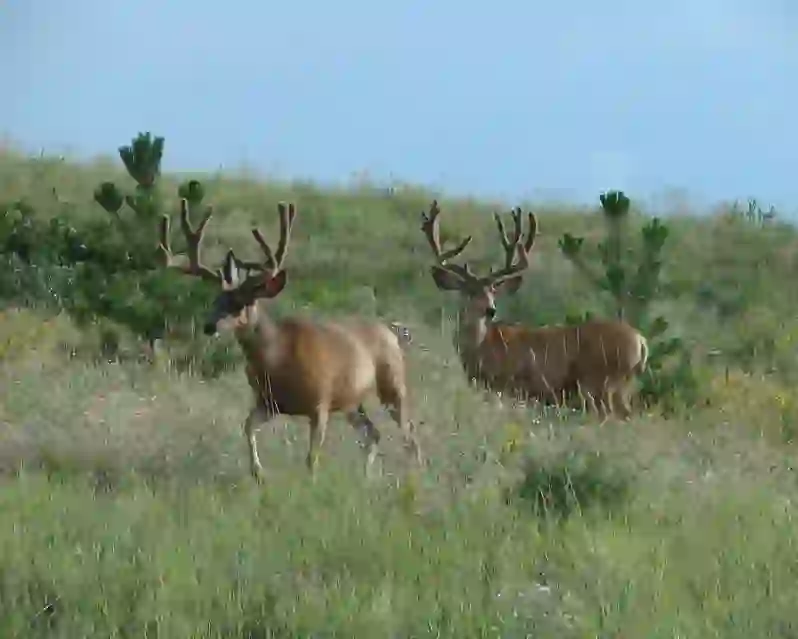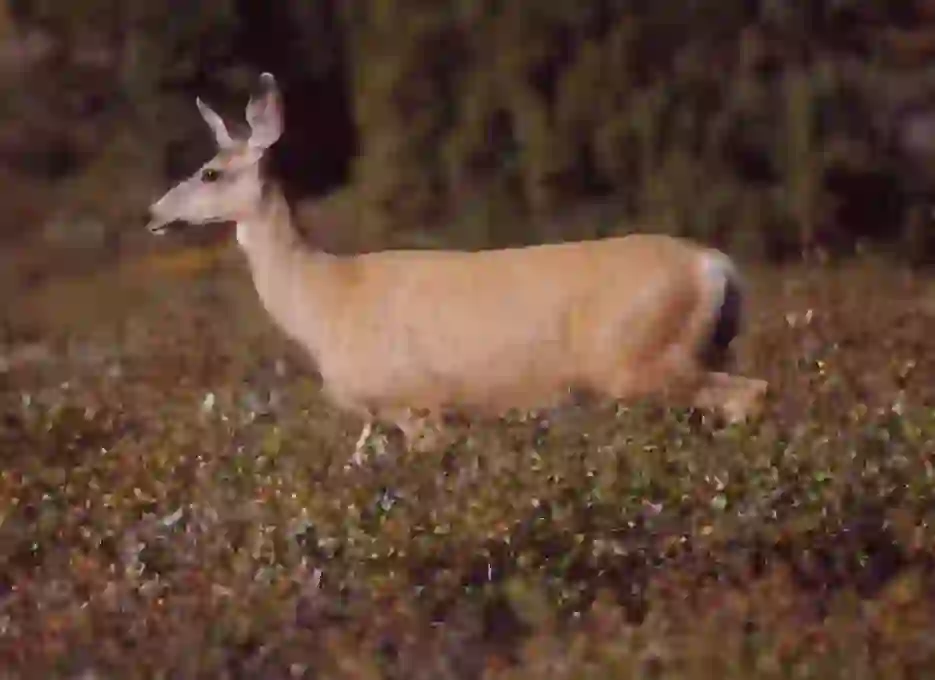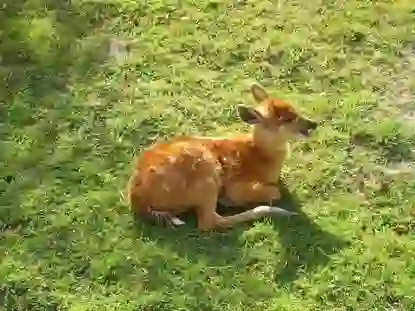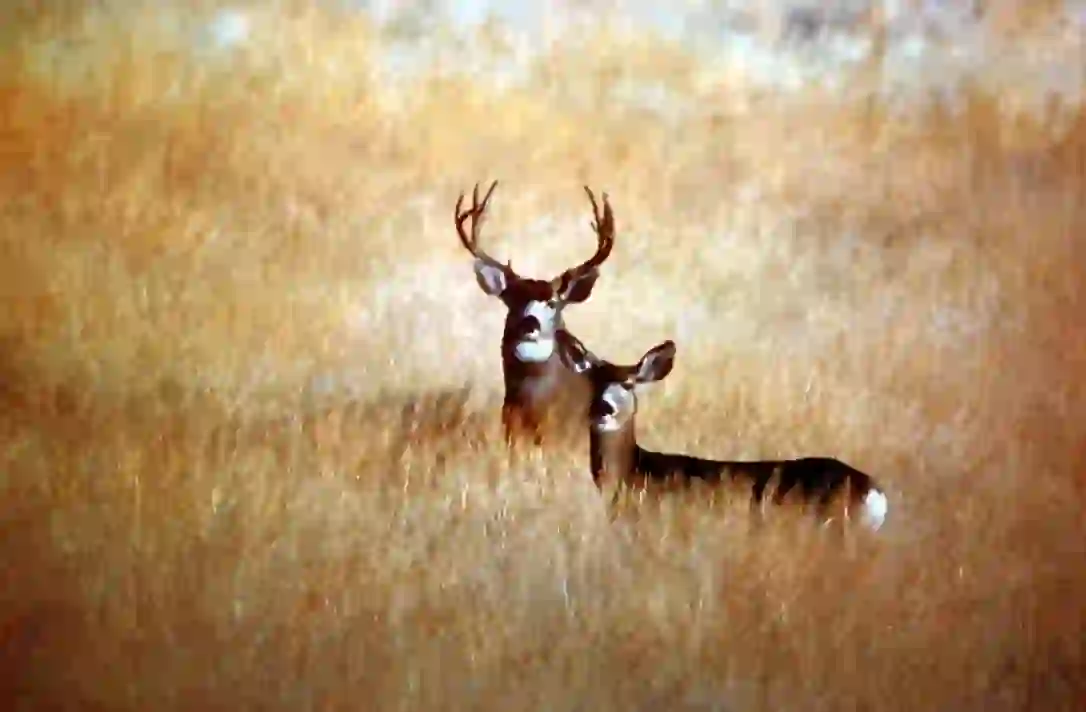
Mule Deer
Mule Deer
Mule Deer
The mule deer, a graceful inhabitant of the majestic landscapes of western North America. Known for its large ears and seasonal migrations, this deer has adapted to a variety of environments, from grasslands and forests to even semi-desert regions. Let's embark on a journey to discover the unique ecology of the mule deer and the challenges they face.
Mule Deer Basic Infomation

| Property | Value |
|---|---|
| Scientific Name | Odocoileus hemionus |
| Taxonomic Status | Species |
| Rank | SPECIES |
| Vernacular Names | Mule Deer |
| Kingdom | Animalia |
| Phylum | Chordata |
| Class | Mammalia |
| Order | Artiodactyla |
| Family | Cervidae |
| Genus | Odocoileus |
| Habitats | Western North America, grasslands, forests, semi-desert areas |
| Descriptions | The mule deer is a medium-sized deer characterized by its large ears and seasonal migrations. |
| Conservation Status | Least Concern |

Size
They measure about 1.2 to 2 meters in body length and about 0.75 to 1 meter in shoulder height. They typically weigh 50 to 150 kilograms. Males are larger than females and have impressive antlers.

Lifespan
About 9 to 12 years in the wild.

Distribution
Widely distributed in western North America. They are adapted to a variety of environments, including the Rocky Mountains, the Great Plains, and the Sierra Nevada.
Mule Deer Q&A

What is the origin of the name 'mule deer'?
They are called "mule deer" because their large ears resemble those of a mule. They are also called 'Mule Deer' in English.

What are the characteristics of mule deer?
They are characterized by their large ears and black-tipped tails. Males also have forked antlers that are shed and regrown each spring. Their coat color changes seasonally, from reddish-brown in the summer to grayish-brown in the winter, thought to help them blend in with their surroundings.

What do mule deer eat?
Mule deer are herbivores, eating grasses, leaves, and fruits. Their diet varies with the season. They eat new shoots and young leaves in spring, grasses and fruits in summer, and acorns in autumn. In winter, when food is scarce, they also eat twigs and bark.

Where do mule deer live?
Mule deer can adapt to various environments, including grasslands, forests, and deserts. They spend the summer in higher elevation mountainous areas and migrate to lower elevations with less snow in the winter. This seasonal migration is done to secure food and avoid the harsh winter cold.

[Quiz!] What are the differences between mule deer and white-tailed deer?
Mule deer and white-tailed deer are both deer that live in North America, but there are several differences between them.
The most noticeable difference is the shape of their antlers. Mule deer have forked antlers, while white-tailed deer have branching antlers.
Also, mule deer are smaller than white-tailed deer and have larger ears. And while mule deer run in a bounding gait, white-tailed deer run more smoothly.

[Quiz!] What sound does a mule deer make?
Mule deer make a snorting sound, like "buh-hit." They often make this sound when they sense danger or when calling to their companions.

[Quiz!] Are mule deer endangered?
Currently, mule deer are not endangered. However, habitat destruction and human activity are impacting their populations in some areas, making their conservation an ongoing concern.

Would you like to become a part of the 'Animalbook.jp'?
Turn your knowledge into Q&A and share it with the world. ※Publication will be activated after purchase. Let's share information together!
Mule Deer Type of List

Mule Deer Ecology
- Live in herds
- Males compete for females during the breeding season
- Herbivorous
- Eat different things depending on the season
- Crepuscular
- Migrate seasonally
Information
Congratulations! You are the first commenter!

Create Your Favorite List!
Mule Deer
Save the animals you love! Build your own list to quickly revisit your favorites later.

Would you like to leave a comment?
※Please note: This is for the purchase of rights to post comments within the article.
Find Your Favorites!
Our shop offers a unique and attractive selection of goods themed around various animals.
Mule Deer References
Mule Deer Introduction of media used

Jeffalbright, CC BY-SA 3.0, via Wikimedia Commons

AnomityCC BY-SA 3.0, Link

Kamil., CC BY-SA 3.0, via Wikimedia Commons

From Wikimedia Commons, the free media repository

Help Enrich Our Animalbook.jp with Your Media!
We are constantly looking to expand and enrich our Animalbook.jp with amazing photos and videos of animals. If you have any media that you'd like to share, please contribute and help us showcase the beauty and diversity of the animal kingdom. Your submissions will be credited and featured in our encyclopedia, reaching a wide audience of animal lovers.


















